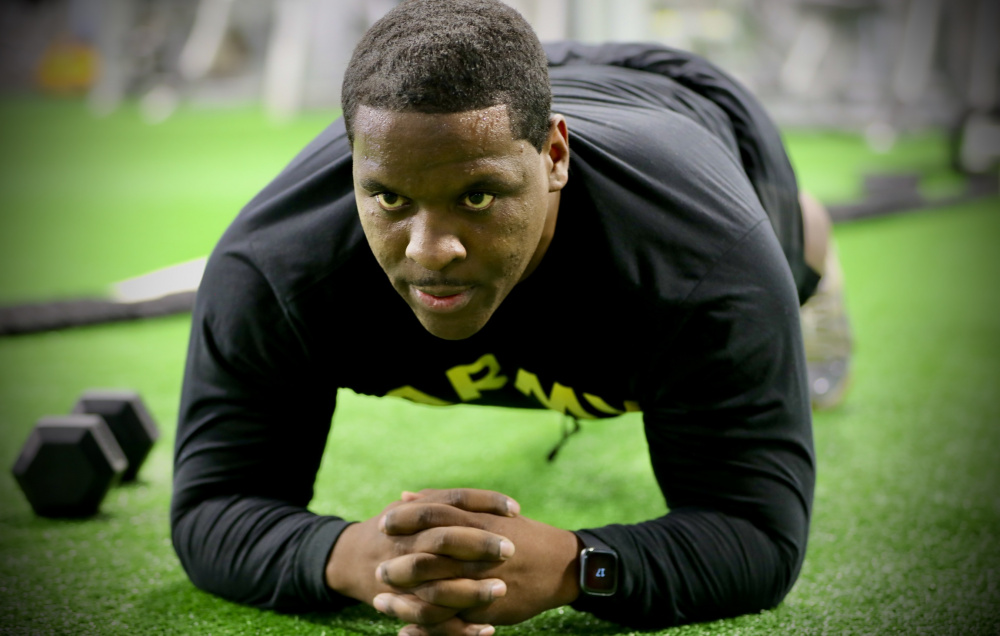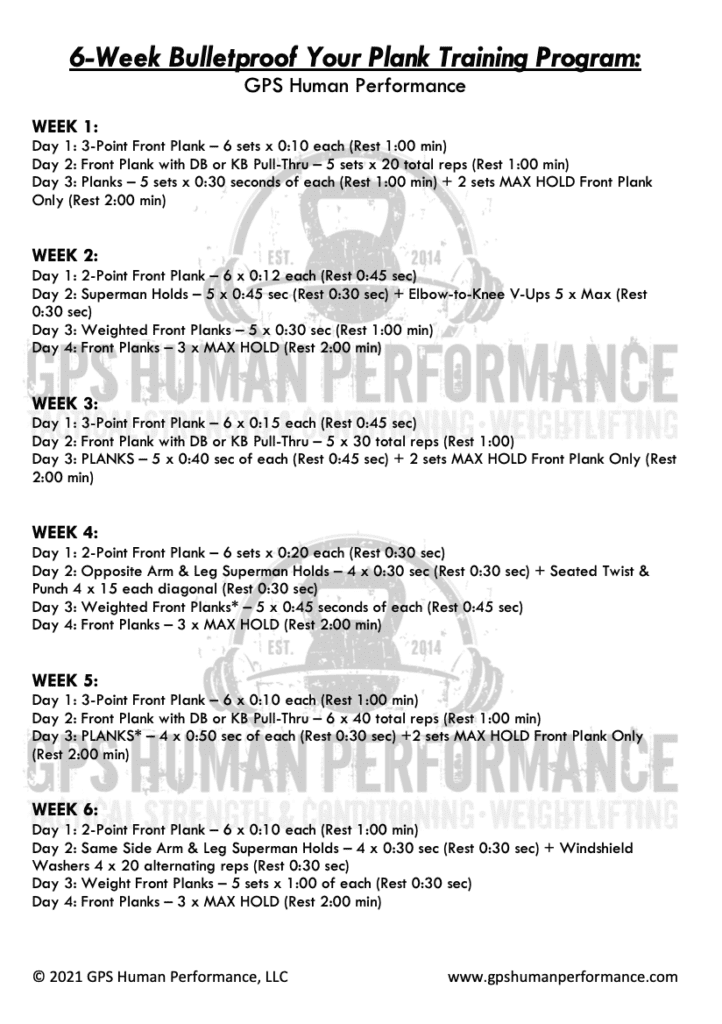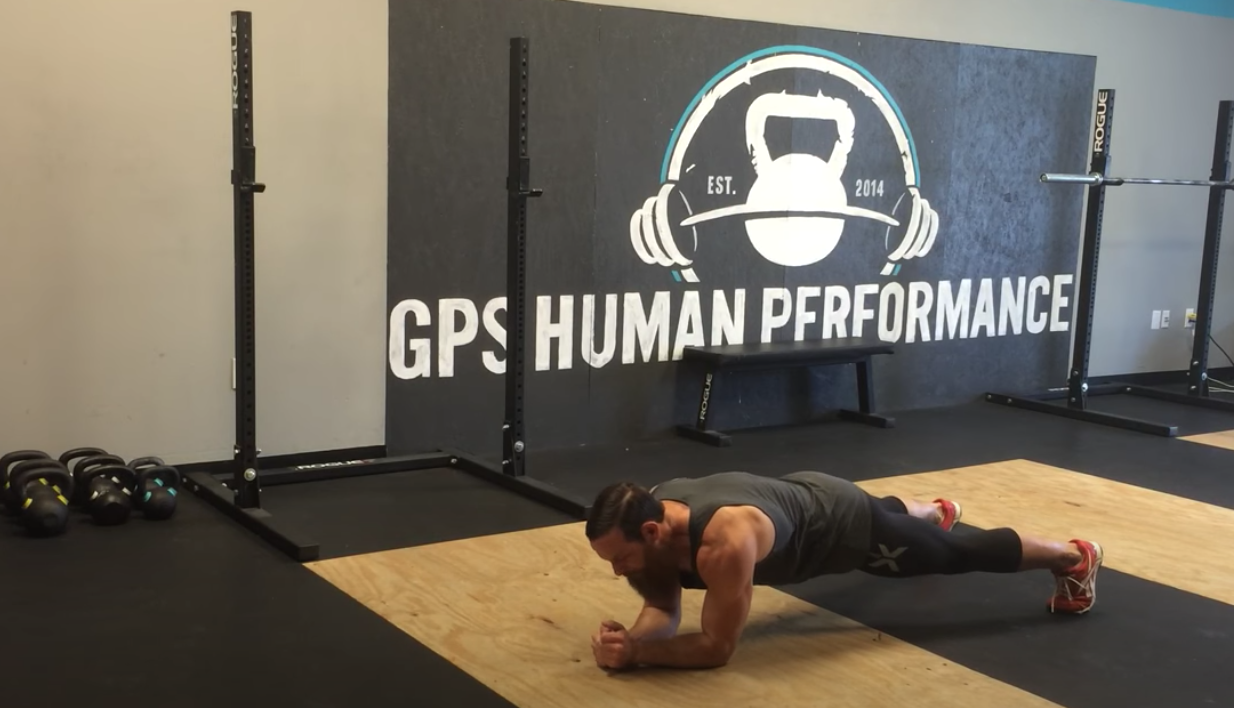I got an email from a soldier last week who was asking for help with their Plank (PLK) on the Army Combat Fitness Test (ACFT). They were curious if I had a training program specifically designed to help them improve their plank, specifically how to hold it longer. As a man of the people, I always try to help as much as I can, where I can and when I can. I asked them to give me a couple days to come up with something for them. So if you want to just scroll right down to the bottom and see it, by all means enjoy. But the first question I asked in response to the email was…
“What is the biggest issue you are having with the Leg Tuck (LTK)?”
When the ACFT 3.0 came out with the Plank as the alternate event for the Leg Tuck (LTK) like most Tactical Strength & Conditioning professionals I was a little shocked at the choice. I mean, I get the choice when there is a need to show improved scores and numbers across the board. I just don’t get the choice when the original goal was to change the culture of physical fitness in the ARMY. Felt like a big cop-out to me to not make it anything to do with the pull-up bar. It’s literally sitting right there, use the damn thing. Could’ve sworn the whole reason for the ACFT was because the Army Physical Fitness Test (APFT) was outdated and was not a good gauge for Mission Readiness? What does a plank really show?
But let’s get back to the topic of the email. Like I said, I asked what the big issue they were having with the Leg Tuck was and they responded with…
"I'm not strong enough yet. But I'm working on it..."
“YET” is the keyword to their reply. They told me they were currently working on it following my pull-up progression blog (FIND HERE) and wanted to work on the planks at the same time. This was the type of response I was really hoping for, because I have gotten other emails where soldiers have just complained about the leg tuck and more or less called it stupid. Things like, it’s a waste of time and they’d never get one so they were just going to do planks. I get it, when the Army’s unit PT never put an emphasis on utilizing the pull-up ever the leg tuck was always going to be a nightmare. Believe me, It’s hard, the first time I ever did one I realized “Oh this is going to be a problem”. There is no denying that it’s tough, but everyone is capable, no matter your physical starting point. The road is just going to be a little longer and rougher for some. But as long as you are heading in the right direction you’ll eventually get there.
Take the guesswork out of your training regiment today!
Quick elevator sales pitch, then back to the blog. The smartest thing you can do is join one of our Online Training Teams for less than a $1 a day or buy access to our 12-Week ACFT Train-Up Plan or one of our 3 Running Programs. Learn more by clicking below.
Thanks for bearing with the sales. Just trying to keep my cat Snatch eating high-end cat food. Back to the blog.
I believe the two most important characteristics a soldier can have for getting their first leg tuck are motivation and determination. It’s not easy to do starting from ground zero. But based on the whole email exchange I am confident this soldier will get their first leg tuck soon. Whether it takes another month or two this soldier gets it and WILL GET IT DONE. So, if you are someone who is reading this, and you haven’t started working on getting strong enough to do some legs tucks a couple times per week go READ THIS.
Time to Get Better at PLANKS!
Based on the recent testing standards you need to hit 2:00 minutes and 0:09 seconds to get a minimum of 60 points. Or smoke it up for 4:00 minutes and 0:20 seconds (pun intended) to get the maximum of 100 points. Now the plank has always been and will always be a go to in all of my CUSTOM TRAINING PROGRAMS or online training teams. They tick a lot of boxes, they help build core stability, core strength and core endurance while also improving your posture. Which all of those will lead to having a healthier stronger more capable back which will lead to a decrease in the likelihood of injury. That’s a win-win-win-win-win.
One of the fun things about planks is the wide variety of options and variations, from adding weight, movement or both! The gold standard will always be the Front Plank from your forearms or a Side/Lateral Plank from the forearms. But from those positions you can lift limbs, add movement and really amp up the simple Plank.

Almost there…
Below you will find a 6-Week Bulletproof Your Plank Training Program. I made it an image so you can copy and paste it easily or save it right to your phone or computer for easy access. Feel free to add these exercises into your weekly training routine where you can. Simplest way is adding them in on Monday, Wednesday, and Friday to have a day of rest between. In weeks 2/4/6 you will have a 4th day, so throw that in on Saturday or Sunday. If you are like most people and you find yourself skipping your core at the end of a training session, add it to the beginning. Problem solved! Lastly, if you get to the end of 6 weeks and aren’t at 4:20 minutes yet, do it again for another 6 weeks with and increase the times/reps of everything.
“Good luck and when all else fails squeeze your butt HARDER!”

Instructions: (click exercise names for demo videos)
Planks – you will always be on your elbows/forearms unless I specify differently. You will also perform side/lateral planks as well for the same time listed. Ideally you start a set in a Front Plank, then roll to one side and do a Lateral Plank on, let’s say your right arm, then roll to the left arm without resting between the 3. Then after doing the prescribed time of each, you will rest for the specified time. Be sure you are performing these ALWAYS to the testing standard. Be strict with yourself.
3-Point Planks – you will perform a standard Front Plank from your elbows/forearms; however, we will be alternately lifting a limb to thus create 3 points of contact. The time listed is for each limb, if you multiply it by 4 that is the entire time you’ll be in a plank. Then after doing the prescribed time of each, you will rest for the specified time.
Front Plank with Pull-Thru – you will perform a standard Front Plank from your elbows/forearms; however, we will now have a DB or a KB sitting outside of your body. You will reach underneath you and pick up the weight and pull it underneath your torso and place it on the opposite of you. FIGHT THE ROTATION. Then you will reach under with your opposite arm and repeat the process.
2-Point Planks – you will perform a standard Front Plank from your elbows/forearms; however, we will be alternately lifting opposite limbs to thus create 2 diagonal points of contact. The time listed is for each diagonal limbs to be lifted, if you multiply it by 2 that is the entire time you’ll be in a plank. Then after doing the prescribed time of each, you will rest for the specified time.
Weighted Planks – you will perform these from your elbows/forearms for both front planks and side/lateral planks. The weight should be placed over your lower back/hips for the front plank and directly over you hip in the side plank. Putting the weight over your shoulders is cheating and won’t help nearly as much as over the hips. Also, be sure you are performing the plank to the testing standard.
Superman Holds & Variations – you will be on your stomach for these. Arms and legs stretched out like Superman… Lift arms and legs up off the ground like you are flying to rescue Lois Lane. Squeeze everything as hard as possible, quads, glutes, upper/mid/lower back, core and taint abs.
Need Help? Just ask…Seriously.
I hope this can help some of you out there. If you have questions let me know geoff@gpshumanperformance.com
Geoffrey Steinbacher is a former Strength & Conditioning Coach within the THOR3 (Tactical Human Optimization Rapid Rehabilitation & Reconditioning) Program at Ft. Bragg. He is a Certified Strength and Conditioning Specialist (CSCS) from the National Strength and Conditioning Association, as well as a Certified Athletic Trainer (ATC) from the National Athletic Trainers Association. He is also an Advanced Sports Performance Coach (USAW-L2) and Head Club Coach with USA-Weightlifting, and a Catalyst Athletics Certified Weightlifting Coach (CACWC-L1). Furthermore, Geoff has a BS in Athletic Training from SUNY Cortland and an MS in Exercise Science from Syracuse University.

